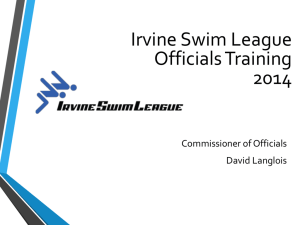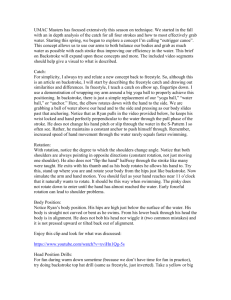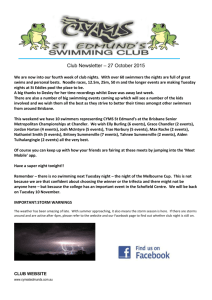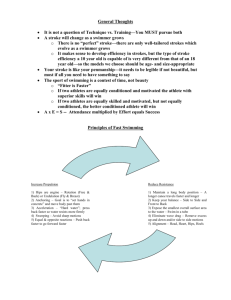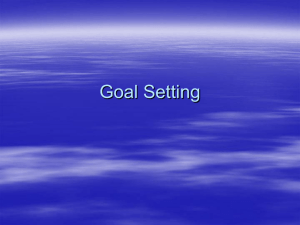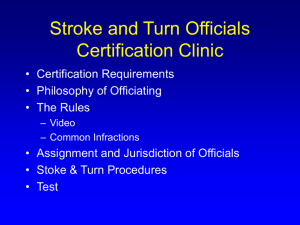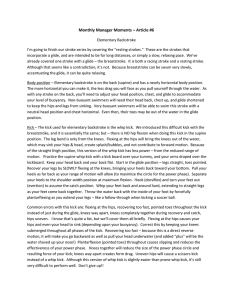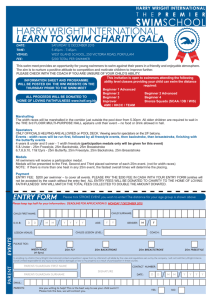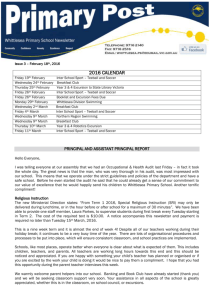View File (DOC)
advertisement
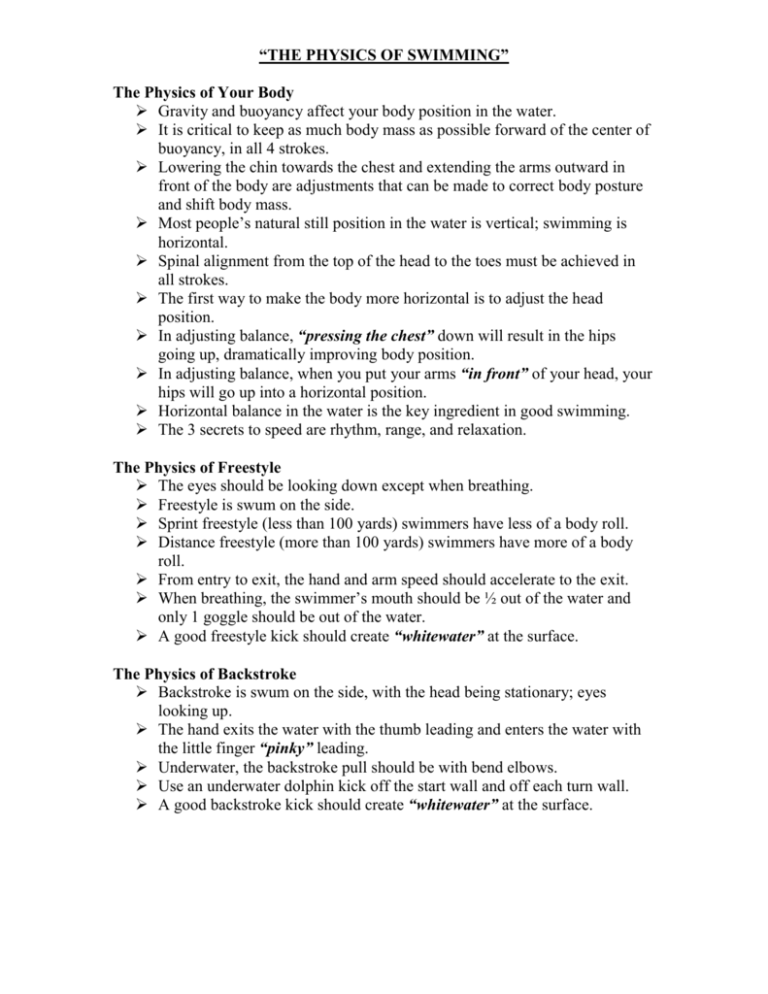
“THE PHYSICS OF SWIMMING” The Physics of Your Body Gravity and buoyancy affect your body position in the water. It is critical to keep as much body mass as possible forward of the center of buoyancy, in all 4 strokes. Lowering the chin towards the chest and extending the arms outward in front of the body are adjustments that can be made to correct body posture and shift body mass. Most people’s natural still position in the water is vertical; swimming is horizontal. Spinal alignment from the top of the head to the toes must be achieved in all strokes. The first way to make the body more horizontal is to adjust the head position. In adjusting balance, “pressing the chest” down will result in the hips going up, dramatically improving body position. In adjusting balance, when you put your arms “in front” of your head, your hips will go up into a horizontal position. Horizontal balance in the water is the key ingredient in good swimming. The 3 secrets to speed are rhythm, range, and relaxation. The Physics of Freestyle The eyes should be looking down except when breathing. Freestyle is swum on the side. Sprint freestyle (less than 100 yards) swimmers have less of a body roll. Distance freestyle (more than 100 yards) swimmers have more of a body roll. From entry to exit, the hand and arm speed should accelerate to the exit. When breathing, the swimmer’s mouth should be ½ out of the water and only 1 goggle should be out of the water. A good freestyle kick should create “whitewater” at the surface. The Physics of Backstroke Backstroke is swum on the side, with the head being stationary; eyes looking up. The hand exits the water with the thumb leading and enters the water with the little finger “pinky” leading. Underwater, the backstroke pull should be with bend elbows. Use an underwater dolphin kick off the start wall and off each turn wall. A good backstroke kick should create “whitewater” at the surface. The Physics of Breaststroke Most successful variations of any of the 4 stroke. Body mass needs to be shifted forward in order to swim “downhill” in each stroke cycle. The stroke timing should be “kick, reach/stretch, and pull.” The breaststroke kick starts with the toes turned outward. During the majority of the stroke, the eyes should be looking downward at a 45 degree angle. In the breaststroke pull, the elbows stay close to the surface of the water. The Physics of Butterfly Hands go in; chest goes down; hips go up. After the start, kick no more than 15 meters/16.4 yards underwater before you surface on the first stroke. Recover with your arms as low as possible; not touching the surface of the water. Look downward and breathe in the ½ inch of air above the water; don’t’ look forward when you breathe. Recover with the little finger “pinky” leading the hand forward. The Physics of Starts Focus on the starter’s commands; vocal and whistles. Remember light travels fasters than sound; make sure you can see the strobe light on top of the starting unit. In the forward start of the blocks, the hips line up above the toes of the rear foot on the block. The streamline off the blocks should occur in flight prior to the entry into the water. In relay starts, most false starts are caused by the incoming swimmer taking an extra stroke or “short stroking”; always stretch the last stroke. The Physics of Turns In freestyle turns, the speed of rotation can be increased by accelerating into the wall and tucking tight in a ball when turning. In backstroke turns, stroke count from the backstroke flags to the wall is critical. In both breaststroke and butterfly turns, the swimmer pushes off the wall on their side and rotates onto their breast before the first arm action. In both breaststroke and butterfly turns, the first arm off the wall goes under water, the second arms goes over the water.
